Get posts by email
Soap Making Q & A ~ An Invitation
November 8, 2011
Official soap week @ FIMBY was a couple weeks ago already. Here's the posts from that week:
My actual soapmaking plans were cut short by an impromptu family trip to hike Mt. Katahdin the Friday of that week. The soap I planned to make that day, Holiday Spice, didn't get made till last week.
I will be sharing that recipe with you in my next post, just in time for you to make a batch for your own holiday gift giving.
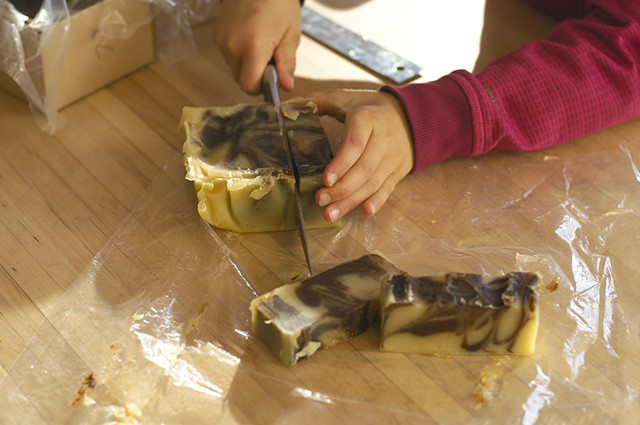
Alternatively, you can buy a bar or two from me the beginning of December when it is done curing. I took special care to cut the bars thin (I'll be selling them by the ounce or gram) so they don't cost so much to ship. I'll post the price and shipping rates when they are ready.
In this post I wanted to share a few photos of what the soap making process looks like and answer any soapmaking questions you may have.
If you have specific questions about any part of the process - supplies, recipes, mishaps, curing, etc... please ask in comments and I will do my best to answer those questions this week before we unplug this machine and pack it up to move to the chalet the end of this week.

Trace
Simple Soap
Like I mentioned in A Soapmaking Journey my Simple Soap recipe, about as simple a recipe as can be found, traced very weirdly this time around. I would have taken a photo but I was so focused on the task-at-hand, it was hardening very fast, that I just didn't have time.

Approximately one day after pouring (about 24 hours) I cut the soap into bars. Some of it I just broke off in chunks. It's destined to be grated in the food processor for laundry soap so it doesn't matter what it looks like. The texture was real crumbly so I wasn't sure how well the soap turned out.
So I did a test. I used the little bits of soap left on the the mold liner (I use a cardboard box lined with a thick plastic bag for a mold) to scrub stains out of my daughter's jeans. Worked like a charm. It doesn't look pretty but it works and that's all that matters.

Holiday Spice
The kids were more involved this time around, it was a bit of a homeschool project after all, and for the Holiday Spice soap I let them all "swirl" their own batch. I found this really great cardboard box that came with four rectangular inserts (a vitamin company box I scored at the health food store). I lined them all with plastic and we each got our our box to muck around with.

This is how you produce two toned/textured soap:
- At trace add your essential oils and any other material you want throughout the whole bar into the lye/water/oil mixture.
- Pour approximately half of the pot into the mold or molds.
- Add your colorants, in this case cocoa powder and ground cloves, to the remaining mixture.
- Mix well and working quickly (don't panic but you can't dawdle at this stage or your soap will harden too much in the pot and you won't get as much into your molds) pour this "colored" mixture over top the first layer.
- Using a spatula carve figure 8's and S-shaped patterns through the liquid soap. Don't be afraid to go deep. Every time I'm cautious the design isn't as pretty.

We each made our own pattern and labeled our boxes accordingly. This kind of thing matters to kids - that they know which is their design and genius (smile).
Shampoo Soap
The girls and I came up with two recipes for this batch - Lavender Lemonade and Orange Spice Cookie (at least I think that is what Celine is calling it).
I don't have as much space for curing soap as I used to, a wall mounted wire rack in my old kitchen. I'm currently experimenting with how to cure soap in small spaces. Don't let lack of curing space deter you. I think soap can really cure anywhere but the more air circulation it gets the harder it gets. And the harder the bar the longer it lasts.

History
My grandmother reads this blog. I don't see her much, she lives on the opposite coast. Hi Grandma, I love you!
Anyway, she e-mailed me her childhood soap making memories after reading my soap week posts. Feeling connected to my grandma and great-grandmother - who I knew as I young child - through my soap making makes it that much more meaningful to me.
I remember when I was little my Mom making soap and using ashes as lye. Yes, and saving all the fats to make soap for washing clothes. Later she used (store-bought) lye, and how very cautious we all had to be .

If you have any questions, ask away. And stay tuned for the Holiday Spice soap recipe.
Filed Under
Resource Library
-

Vickie LeBlanc on Nov. 8, 2011, 11:32 p.m.
I love making soap, it's addictive. As I've mentioned before, it's your simple soap making video that got me going on this journey. Seems that the essential oils I use are not as strong smelling after the soap has cured and I would love for them to keep their smell. I order my essential oils from Mountain Rose Herbs. Should I be using stronger oils ?
-

renee on Nov. 8, 2011, 11:58 p.m.
The smell always dissipates over the course of curing. EO's are very volatile. I don't have any experience with MRH oils. I suspect the higher quality EO's, which I think MRH are, last longer but I don't know that from experience. You'd have to have 2 batches side by side to really tell. As a rule of thumb I use a little more than 5% EO's of the total carrier oil in my recipes. For example, if I make a batch with 95 oz. of oil I'll use 5 oz of EO's. EO's are the most expensive part of soap making. Something to consider for "fixing" the smell is to blend a strong base EO with the top note EO's. Let me explain. EO's are often described as having top, middle or base notes. This relates to their evaporation rates and length of time that the aroma will last. Top notes are usually thinner, lighter colored oils with fast evaporation rates. But it's these notes you'll notice first in a blend. These EO's refresh, stimulate and uplight. Examples: Lemongrass, Orange, Peppermint & Tea Tee. Base notes on the other hand are usually thicker, dark and viscous and have the slowest evaporation rates with the longest lasting aroma. Think deep and warm scents. They are great "fixatives" which help slow the evaporation of the top note. Ex: Sandalwood, Patchouli, Clove Middle notes are in between and include Lavender (one of my favorite EO's), Eucalyptus (top/middle), Pine, Rosemary. My other rule of thumb is to try to make soap with over 50% middle notes and split the top and base somewhat equally. But sometimes I make soap with just a middle and top and then use more middle. My Holiday Spice recipe, coming next, is 20% Rosemary (middle), 40% Clove (base) and 40% Orange (top). This is because I wanted it to have a real spicy smell and not smell too green (from the rosemary). Hope that helps somewhat. I use an aromatherapy chart I picked up years ago at health food store. YOu might be able to find a similar guide on-line.
-

Vickie on Nov. 9, 2011, 2:44 p.m.
Perfect. Thanks so much for the explanation. I did'nt know all that about essential oils. I'll look around for a chart.
-
-
-

sara on Nov. 9, 2011, 1:38 a.m.
Hi, I am new to your blog and I really enjoy it! I love these soap making posts and I am interested in trying a batch for Christmas. I was looking at digital scales online as I don't have one and was wondering what characteristics I should be looking for in one. For example, what is the best weight range to have? If you have any input, I would appreciate it. Thanks!
-

renee on Nov. 9, 2011, 11:41 a.m.
Sara, I would look for a scale with (at minimum) .25 oz increments (alternately 5 to 10 gm increments). The most oil I've ever weighed at one time is maybe three pounds. I make soap batches with 5-6 pounds total of soap but I don't weigh all that at one time since you weigh each oil on it's own. Hope that helps. Let me know if you need me to clarify any of that.
-
-
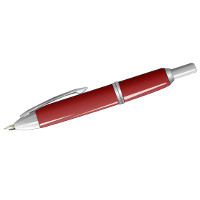
tara on Nov. 9, 2011, 12:36 p.m.
Renee, I loved your soap posts. I wanted to comment but life was busy that week and I wasn't able to. Strange how life seems too busy to type a few words. Anyways, I wanted to thank you for sharing your knowledge.. Also, is it strange that I love the photo of the soap at trace? I hope you will let us know how your shampoo soap turned out. They look beautiful.
-

renee on Nov. 9, 2011, 12:37 p.m.
No it's not strange! I LOVE that photo also. I do plan to share how the shampoo bars turn out.
-
-

Audrey on Nov. 10, 2011, 9:50 p.m.
Hello Renee,
I was just wondering about your shampoo soap. I've been making shampoo soap for a year now and at first it was fantastic but withing a few months we found that it leaves our hair clean but greasy and very difficult to comb out (I have long hair). I would really like to find a recipe that does not leave our hair so greasy and even better one that helps conditions to minimize tangles. How has your shampoo soap worked with your family? do you use commercial conditioners, cider vinegar or baking soda washes to condition? Would you be willing to share your shampoo recipe with me? Any help would be appreciated, I really do not wish to purchase commercial shampoo and conditioners! ...thanks
-

renee on Nov. 12, 2011, 1:29 p.m.
This is the hair washing routine I've used for my girls (my hair is super short), basically a handmade body bar with apple cider vinegar & baking soda rinse. Celine's hair is longer and more oily now and she was finding that my regular body bars didn't lather enough for her. When I wash her hair they lather but I'm also quite vigorous in my rubbing. So I set out to craft a shampoo bar for her that lathers better. When we've tested the soap and see how it works I will make the recipe available.
-
-

Constance on Nov. 11, 2011, 3:27 a.m.
Your soap looks good enough to eat! Reminds me of fudge waiting to be cut;) Good luck with the move! I love to read your blog. You and your family are an inspiration to me. We considered moving into a yurt a few years ago but we chickened out! Maybe someday...
-

sara on Nov. 15, 2011, 5:33 p.m.
Hi Renee, I have three more questions that I hope you are willing to answer. First, about your holiday bar. Do you think you could halve the recipe with good results? Do you think it might be done curing in 4 weeks instead of 6 which is what I am working with now as a time frame now that I have gathered supplies. Also, I have another recipe that mixes the oils and lye solution at 80 degrees. Your holiday bar mixes at a quite a bit higher temp. Is the object here to get the oil and water solutions at about the same temp in order for it to mix well? Thanks so much. I am looking foward to giving this a go- even if they don't turn out in time for my Christmas gathering.
-

renee on Nov. 15, 2011, 7:13 p.m.
Sara, Yes, I think you could make half the recipe, just fine. Make sure halve your oils and then use a lye calculator to figure out your water and lye amounts. Yes, the soap will cure in 4 weeks but what I've learned is that longer is better and will produce a harder, longer lasting bar. What I've done in the past, when I didn't have enough time for a full 4 weeks of curing, is made labels with a ready to use by date. Two years ago I made gift bars mid-December because my original batch didn't turn out (my only real failure to date).
Wow, 80F is a really low temperature to be mixing the oils with lye/water. If you are using any solid-at-room temperature oils such as shortening, coconut oil, shea butter or cocoa butter those oils will be close to solidifying at that temp. Mind you, when they are mixed with liquid oils this changes somewhat but I personally think 80F is too low. You are correct, the object is to get the oil & water solutions at about the same temp. I usually do this is the 100-130F range, I've only gone below 100F by accident, letting the solutions sit too long. Good luck and happy gift soaping!
-

sara on Nov. 16, 2011, 8:37 p.m.
Thanks so much for your answers Renee! They are really helpful. I thought 80 degrees sounded a bit low too, but I do think the author said that she would let the lye solution cool down overnight to give herself more time for the soap making process because she had young children at the time. I may have botched that story up, but I think it was something like that. I also love your idea of the labels you made. Brilliant! I read your post today about your moving in weekend. I sure hope you are feeling better and are 100% soon!
-
-
-

sara on Dec. 21, 2011, 1:11 p.m.
Oh Renee, I am having such trouble with this soap recipe. The first time I made it, I felt the variables that made it go awry were several things. I tried halving it, I had to make a last minute oil substitution (more canola for the soybean oil), I was making two batches of soap at once, my mold seemed too shallow and I had kids underfoot (though I started at naptime). So, my good, sweet friends took pity on me and gave me more money to cover about 2/3 of the costs to try again. So, last night, I had all the right ingredients, an empty house, and decided to make a full batch but I still flubbed it up. I made a mistake of measuring things in fl. oz instead of ounces-my new scale confused me I guess (and I measured everything so carefully!), but by the time I realized it, the oils were already melting. And I didn't know how to rememdy it, except pray for the best. Anyway, it came to trace, which I thought was hopeful. And then the same thing as last time happened. When I put the cocoa and cloves in and tried to marble everything. The brown layer got all clumpy and gross and the oils started separating, though it mixed fine when adding the colorants. Then it all got oily and separated, but it was still about 120 degrees, so I just decided to try blending it all again. It got really thick and the oils mixed back in, but it is not smooth and it is very dark brown. It seems to be firming up after 10 hours or so, but it feels spongy. It is definitely not beautiful :(. I so badly want to successfully make this beautiful, swirly soap, but now I am scared. If finances weren't such an issue maybe it would be another thing. It just makes me sick to pour that much money down the drain. The other soap I made the first round had palm oil in it. This is before I saw that you had a link that palm oil was not a very good choice. Bummer! That soap turned out thankfully. Does palm oil saponify easier than other oils? So, any thoughts or encouragement? Especially about adding in the colorants? Why they didn't seem to incorporate?
-

renee on Dec. 21, 2011, 8:04 p.m.
Will be in touch with you privately Sara.
-
-

Elizabeth on Nov. 22, 2011, 4:47 a.m.
I am interested in making soap I would like to talk to you I am scared and need to speak with Someone about starting all of this. I don't want to get into a big mess financially but would like to start making it! Please help me we have five children and I am looking for this to help my family income! Thanks, Elizabeth
-

renee on Dec. 27, 2011, 8:55 p.m.
Elizabeth, I am actually available for private soap coaching, similar to my homeschool coaching services. The rate is the same. E-mail me if you are interested.
-
-

Charity on Nov. 23, 2011, 3:14 a.m.
I was wondering if you have experimented with making softsoap or liquid bodywash. I have not used bar soap for several years because whatever ingredient makes the soap hard is also the same ingredient that leaves soap scum in your bathtub. So I've outlawed bar soap in my house and saved myself lots of scrubbing. I'd love to find out if there is a way to make it and save some money. Thanks
-

renee on Dec. 27, 2011, 8:56 p.m.
Charity, I have never made a liquid soap. I haven't had soap scum issues before with handmade soap but since moving I understand what you mean. The water here is different and does leave a dirtier tub than I'm used to.
-
-

Nicole on Nov. 6, 2010, 6:29 p.m.
Hi Renee. I've made a couple batches of soap with some friends, and am ready to try something on my own. I'd like to make something not too strong smelling and I'd like to use honey, bees wax, goats milk or coconut milk, and I'm happy to leave the color as is...do you have any tried and true recipes that you like to use? I'm hesitant to just go on the internet and pick something! Thanks! Nicole
-

renee on Nov. 7, 2010, 2:58 a.m.
Nicole, Sounds like you are wanting to make a milk and honey type soap. Sounds lovely except I have no experience whatsoever in using any of those ingredients in soap. Lip balm and lotions yes but not soap. As far as tried and true recipes I recommend the recipe I shared in this post (in step 2). Like I said, I don't use it any more as I like to experiment with different oils but that is a very basic and tested recipe. Stay tuned because I have a how-to-make soap video coming up soon. I've filmed it but haven't had time to edit and put it together to post. Soon...
-
-

Jeannie on Nov. 10, 2011, 10:15 p.m.
Hi Renee, By some divine internet rabbit trail, I've just found your blog. I'm moving from melt & pour to lye soap making and I was wondering if you could tell me anything about how you package your soaps. Do they need to be wrapped after curing or is it better for them to continue to "breathe"? Thanks for any information (and I apologize if you've answered this somewhere already)!
-

renee on Nov. 17, 2011, 11:10 a.m.
Jeannie, I honestly don't know from a science point of view if they need to continue to "breathe" after curing. What I do know is I see many soap vendors (people I assume who know something about it) packaging soap and others selling it "naked". If the soap is sitting for a long time it might be better to package them to help preserve the EO fragrance. Just a hunch here. I personally only wrap mine for giving away. I store all my personal soap unwrapped.
-
-

Melissa on Nov. 17, 2011, 5:07 p.m.
Another Canadian supplier for you... I recently ordered supplies from New Directions Aromatics and Saffire Blue (www.saffireblue.ca). The latter might be worth checking out. I haven't ordered the exact products from each place to compare quality, however their prices are generally better than the other. I was also impressed by their shipping packaging. Admittedly, my order from NDA was designated for pick-up and things had been tossed in plastic shopping bags, however NDA did not tape any of the bottled liquids. Saffire Blue has every bottle taped (around the cap where it meets the bottle), in addition to bubble wrap of each EO. They used cornstarch packing pellets, which easily dissolved in the sink with water. They also sent a follow-up email, which was nice. Hope that helps as you settle into your new home (congrats on the adventure) and get back on your feet (one day at a time).
-

Sarah on Jan. 17, 2012, 11:29 p.m.
I have a GIGANTIC box of fragrance oils that was given to me from a store closeout. Is there going to be an issue using fragrance oil instead of essential oils? Another question is can you blend by hand instead of a mixer? We run off solar power so I try to limit the power usage from myy "crazy craft projects," as my DH refers to them.
-

renee on Jan. 17, 2012, 11:58 p.m.
I don't use fragrance oils because they aren't naturally derived. Solar power - cool. Yes, you can mix by hand. It will take you a lot longer but that's how they did it in the "old days".
-
-

Melissa on Feb. 13, 2012, 7:50 p.m.
An idea for curing soap in small spaces...
So, I've been coaching myself up towards making my first batch of soap and in the process found a little free ebook (http://www.kobobooks.com/ebook/Clean-Across-Canada/book-EO4j07lacUSspkHn9rWXIg/page1.html), that explains a process using the oven. As I understand it, it effectively cuts down on the curing phase. There is also a small batch approach (1 lb) and a reference to a site with lots of 'blender' sized recipes (http://www.colebrothers.com/soapcalc/free.html).
Now for me both aspects appeal because I don't have a large space to cure or store the soap in, plus, I'm too curious to make a large batch and wait until it cures and gets used before trying another recipe. But 1 lb batches...now that is doable! It may not be new to you, but I thought that in your new, cozy space, the oven and small batch approach might be useful too.
-

renee on Feb. 13, 2012, 10:33 p.m.
Thanks Melissa. I actually like the longer cure (I'm familiar with hot process and oven curing). There's an intangible quality for me in the waiting, it's like slow living or slow food. I've managed to find spots to cure soap on top of cupboards but thanks for thinking of me! Any recipe for soap can be made small batch if you just decrease your oils and recalculate your water and lye numbers and small batch might be nice for people afraid to do a big batch.
-

Melissa on Feb. 21, 2012, 7:12 p.m.
I made my first batch on the weekend! Coffee grounds & orange eo for a kitchen/mechanics soap. It was a couple of pounds, so I opted to pour half the soap in an empty 500ml cream carton to cold process, and then I worked with the rest in the oven. It was definitely interesting...that hot process soap is so gloopy and messy to mold that I think I'll stick to cold processing!
Anyways, I just wanted to thank you for posting your soap how-to's...they were definitely the catalyst for me trying my hand at crafting soap.
-
-
-

Megan on March 1, 2012, 3:08 p.m.
First, off, well done on the website! I'm a new fan and thoroughly enjoyed reading and browsing. I love the story about your grandmother and how you get to share your experiences with her. I'm having a huge problem with handmade soap and hard water. We used to be exclusive Dove bar users because it made our skin feel great but we switched to handmade soap about 6 months ago. We have bought lots of different types of handmade soaps and all of them dried out our skin. So we started making our own soap about 3 months ago hoping to make something more moisturizing. We've tried 3 recipes and still, the dry skin persists! I haven't tried a castille soap yet since my husband's requirement is that it have lots of lather. We have VERY hard water and I think this has something to do with how the soaps are drying. Have you heard of any extra moisturizing recipes that work especially well in hard water? I've searched around, but everything I've found has to do with laundry soap. Thanks!
-

renee on March 5, 2012, 1:22 p.m.
Unfortunately, I have no experience with that. Good luck though (smile).
-
-

Anonymous on Aug. 28, 2012, 10:37 p.m.
Aloha, I am new to soap making. I just finish making my first batch of liquid soap. It turns out clear but way to thin even though I add glycerin as a thickener. What do I do now to thicken at this point? I use the following ingredients: 24 oz coconut oil, 13 oz olive oil, 11 oz castor oil, 2 oz lanolin. I neutralize it with 33% borax solution, add EOs and thicken with glycerin.
-

renee on Aug. 28, 2012, 10:49 p.m.
I do not make liquid soap so I can't help you.
-
-

Anonymous on Aug. 29, 2012, 6:22 p.m.
OK. Mahalo (thank you) anyways. Aloha, karen
-

Robert on Dec. 28, 2012, 9:51 p.m.
Beautiful blog post. It's inspiring. It makes me want to make soap!
-

Sophie on Dec. 18, 2013, 11:47 a.m.
with melt and pour soap, is there any substitute for fragrance/ essential oils? I'm 12 years old and kind of a newbie, but i have made a few soaps and they have turned out pretty well. I wanted to make my mum some soap for christmas but i don't really have any money to buy more fragrance oils. I also don't have the time for them to arrive as it is 7 days till Christmas. I just need any idea of something that can be used instead that will smell good. I don't know what to do so I would really appreciate some help.
Thanks in advance x
-

renee on Dec. 21, 2013, 4:36 p.m.
Sophie, I don't make melt and pour soaps so I can't speak much to that and I'm wracking my brain for what to use for fragrance instead of an essential oil but nothing much comes to mind. Maybe you could google it? If I was your mom I would appreciate any gift, even if it didn't smell nice (smile).
-
-

Sophie on Dec. 21, 2013, 8:42 p.m.
Oh thank you very much! I really appreiciate the help anyway. I tried googling but I couldn't find a helpful, you know what google's like! Thanks for the help anyway, and I managed to put together something for my mum.
Thanks again, Sophie x
-

renee on Dec. 21, 2013, 8:47 p.m.
Sophie, You're welcome. I wish I could have been more help. I'm sure your mom will appreciate anything you make for her, I know I would!
-
-

emily jeandemange on April 12, 2016, 3:47 p.m.
When using goats milk, do I use same amount as liquid required in recipe?
When using Shea and mango butters should I always add them after trace or can they be mixed in with the oils before soap avocation?
-

renee on April 12, 2016, 11:21 p.m.
I've never used goats milk when making soap. I'd google it and see what you get.
Your oils should be incorporated into your oil mixture before trace, this includes shea and mango butters. I've never added a base oil (the oils that make the soap vs. essential oils) after trace. I do however superfat my recipe for 5%. Which simply means I use an amount of oils that is a little more than what will be saponified by the lye. Most any lye calculator will figure this out for you. Superfatting adds moisturizing qualities to your soap bar. You can find lye calculators on this page.
-
You can subscribe to comments on this article using this form.
If you have already commented on this article, you do not need to do this, as you were automatically subscribed.

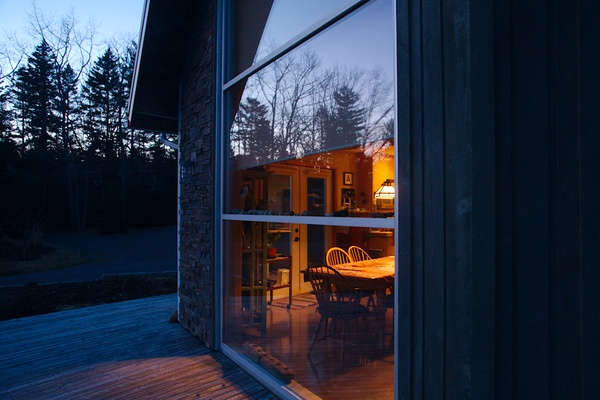
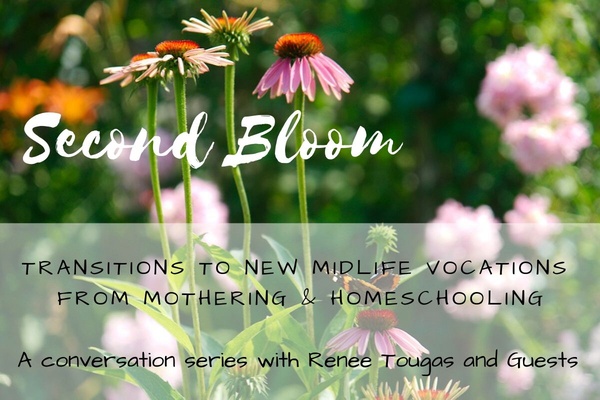
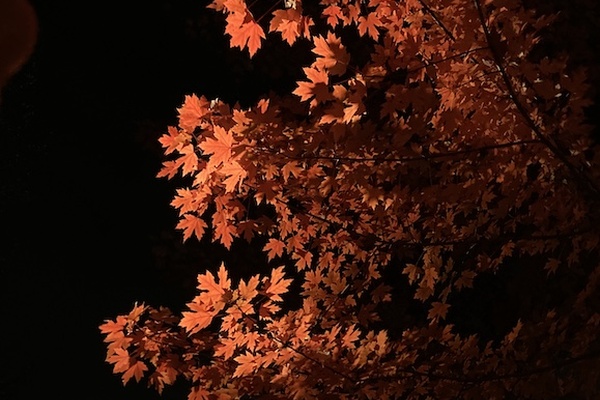
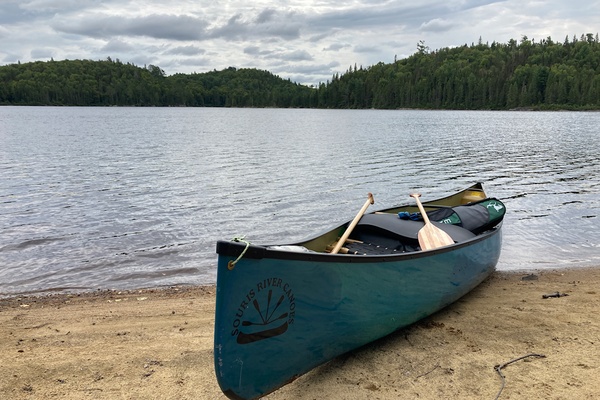
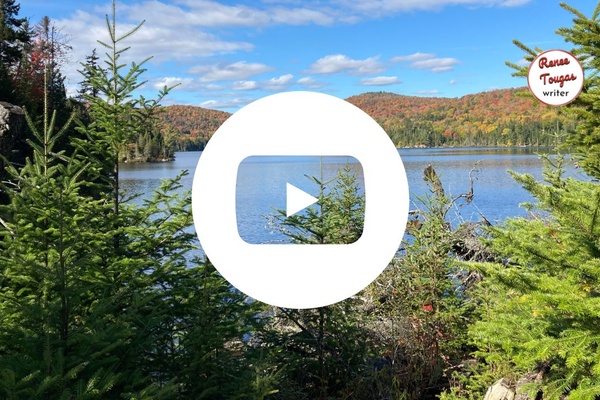

Michelle on Nov. 8, 2011, 7:05 p.m.
How lovely that you share this soapmaking heritage with all those who have gone before you and now with your children. That is a lot of soap you make. Hiking must make one so incredible dirty.! :)
Good luck, Renee, with your upcoming move. The place looks wonderful.
renee on Nov. 8, 2011, 7:19 p.m.
ha, ha! This soap will last for the whole winter season (body & cleaning - laundry, dishes, stains) and with some to sell and giveaway.I don't think I'll make soap now till next spring/summer.